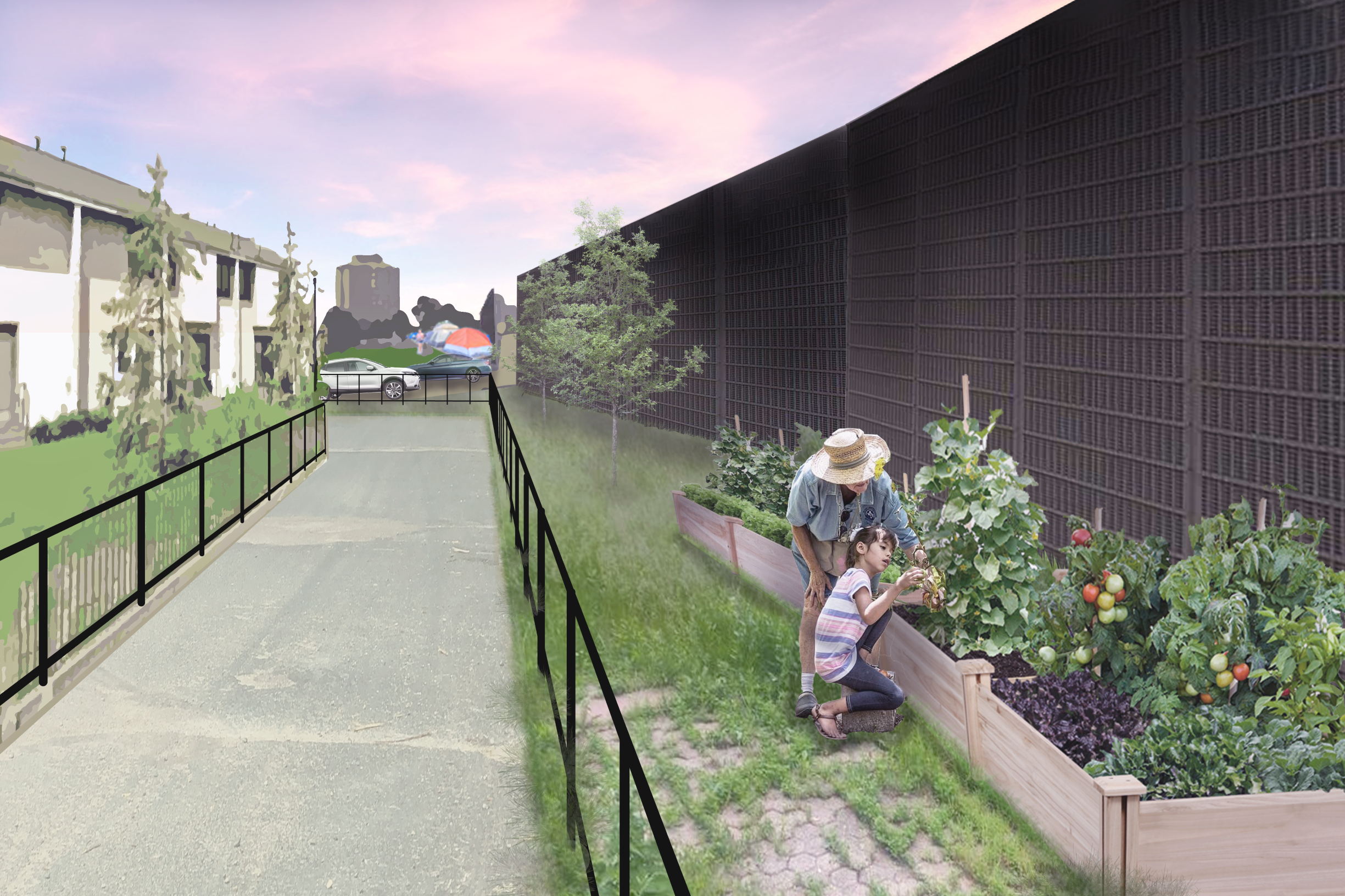LAND RELATIVES

“Urban indian”
As you drive toward Highway 55 on Cedar Ave S
through the middle of Little Earth on your way to the
downtown Minneapolis major highway interchange,
you may miss it. You have just driven through the
first urban housing complex built in the United States
with a native preference, on land currently owned by
the Little Earth United Tribes Housing Corporation.
Members of 39 tribes have made homes in the 212
units arranged alongside both sides of the street.1 On the east side of the street beyond a line of fence
that outlines the whole complex, is a community park.
If you wind down a small road that hugs the west
side of the complex, you will catch a glance of a small
community garden that runs along the tall highway 55
barrier wall.
As you pass you notice carefully blocked
off private entrances to the complex on the other
side of the street. 78% of Indigenous Americans live
in urban areas. People from native nations that are
unrecognized by the government, reaffirmation tribes,alongside generations of people forced off of lands make up this
percentage. “Three generations of our people were forced into
poverty, were forced off our land and made refugees in this society.
Now a lot of our people live in Minneapolis”2. The majority of Little
Earth residents live off of public assistance, a little under half of the
heads-of-households are unemployed. Later, when you are on your
way back out of the downtown interchange heading back toward
where Little Earth is, you notice
a line of tents between the Highway
and the same barrier wall you saw alongside the garden. This is an
encampment of unhoused indigenous people. Little Earth is across
the street from East Phillips Park and Community center, a city owned
public park. The encampment sits just north of the park, between the
highway barrier wall and the Little Earth Bike Path. The encampment
was informally established in 2018, known as “the Wall of Forgotten
Natives”. The unresolved housing problems were worsened by the
pandemic and the uprisings following the murder of George Floyd
just a couple miles southwest, the space has been subject to heavy
policing of unauthorised enacmpments that still persist. Beyond the
highway barrier that borders these spaces for
Indigenous people is a
network of city streets and recreational bike paths that extend over
and to the Mississippi River, the continent’s second-largest drainage
system, a vibrant ecosystem central to the existence of human life in
America.
1 https://littleearth.org/
2 Winona LaDuke, Voices from White Earth: Gaawaabaabiganikaag
Full Class Document
1 https://littleearth.org/
2 Winona LaDuke, Voices from White Earth: Gaawaabaabiganikaag
Full Class Document
